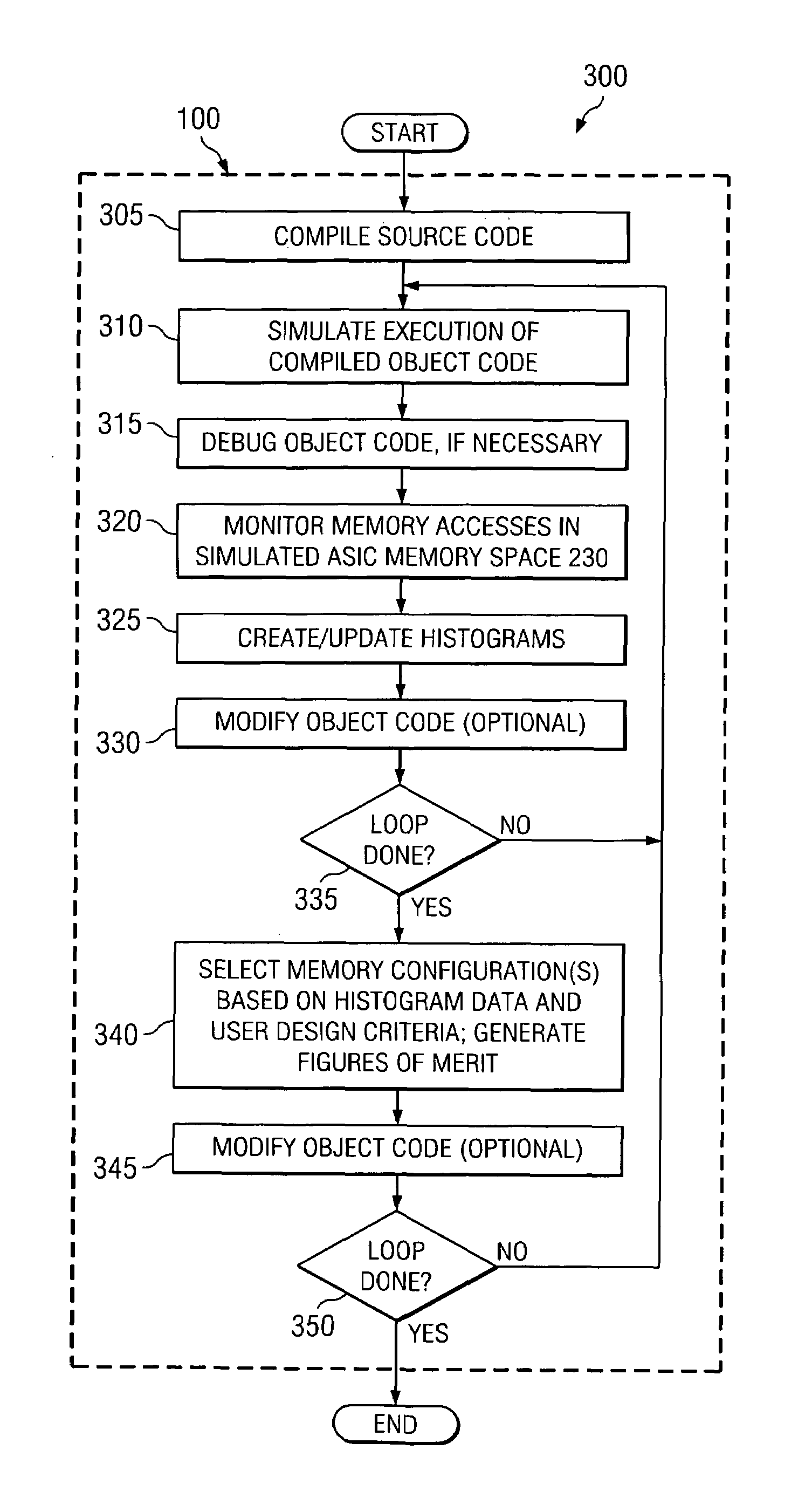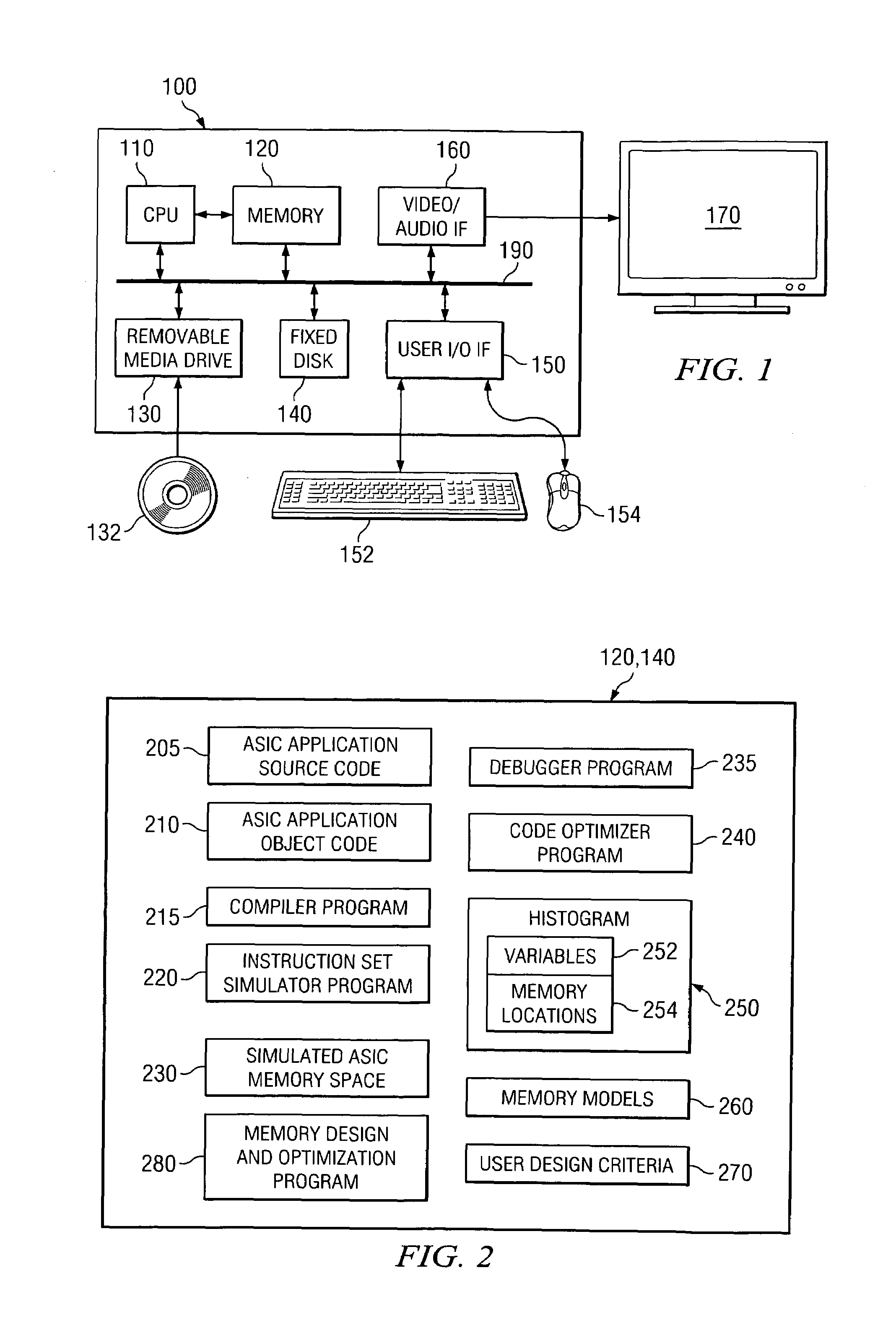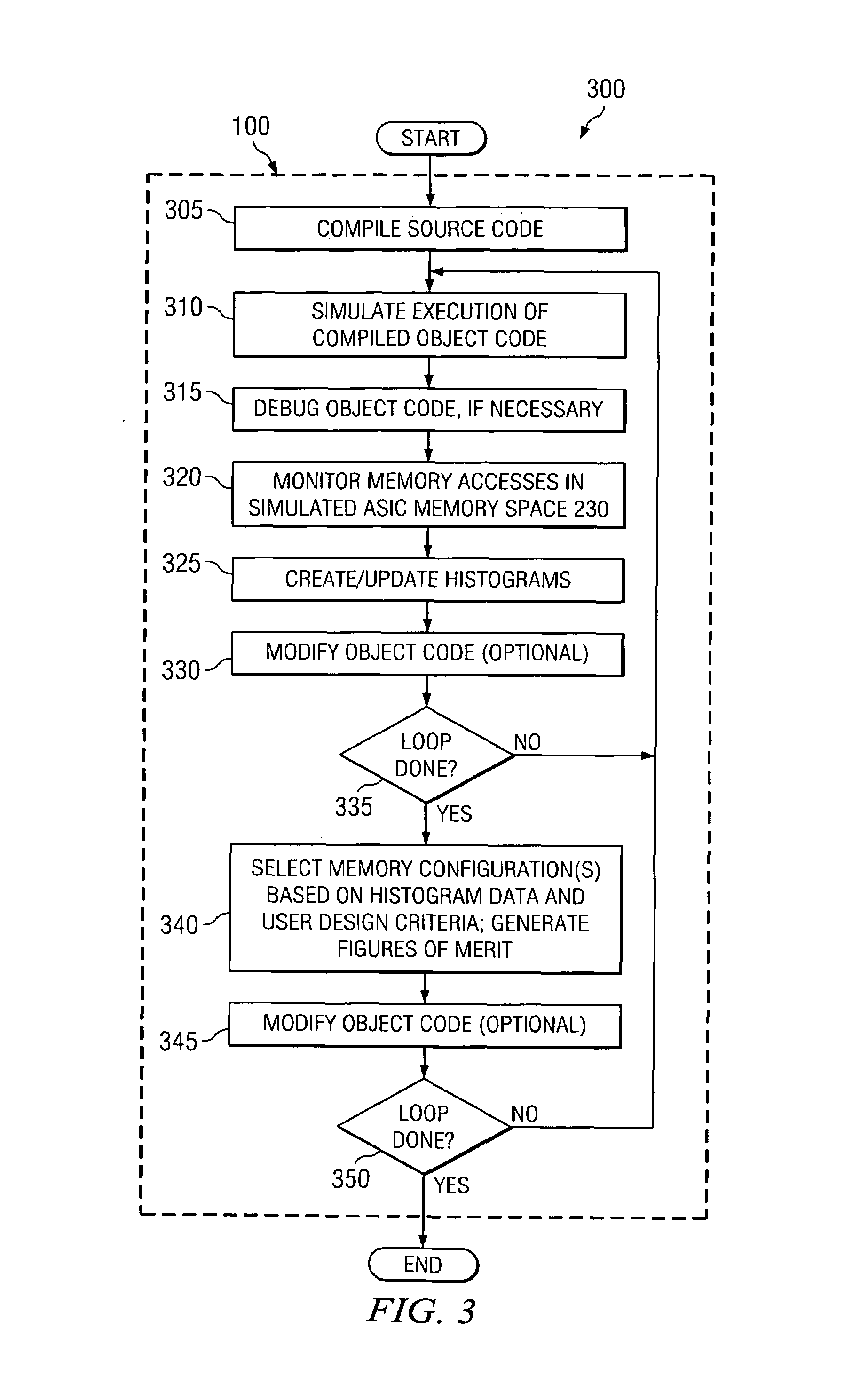System and method for designing and optimizing the memory of an embedded processing system
a technology of embedded processing and memory, applied in the field of memory design applications, can solve the problems of occupying the smallest amount of die space possible, and limiting the amount of embedded memory that will be available in the system
- Summary
- Abstract
- Description
- Claims
- Application Information
AI Technical Summary
Benefits of technology
Problems solved by technology
Method used
Image
Examples
Embodiment Construction
[0020]FIGS. 1 through 3, discussed below, and the various embodiments used to describe the principles of the present invention in this patent document are by way of illustration only and should not be construed in any way to limit the scope of the invention. Those skilled in the art will understand that the principles of the present invention may be implemented in any suitably arranged processing system.
[0021]FIG. 1 illustrates exemplary processing system 100, which is capable of designing and optimizing the memory of an embedded system, such as an application specific integrated circuit (ASIC), according to one embodiment of the present invention. In an advantageous embodiment, processing system 100 may be embodied in a personal computer (PC) or equivalent workstation (as shown in FIG. 1) that contains a processor and memory capable of executing memory design applications and / or memory optimization applications according the principles of the present invention.
[0022]Processing syst...
PUM
 Login to View More
Login to View More Abstract
Description
Claims
Application Information
 Login to View More
Login to View More - R&D
- Intellectual Property
- Life Sciences
- Materials
- Tech Scout
- Unparalleled Data Quality
- Higher Quality Content
- 60% Fewer Hallucinations
Browse by: Latest US Patents, China's latest patents, Technical Efficacy Thesaurus, Application Domain, Technology Topic, Popular Technical Reports.
© 2025 PatSnap. All rights reserved.Legal|Privacy policy|Modern Slavery Act Transparency Statement|Sitemap|About US| Contact US: help@patsnap.com



